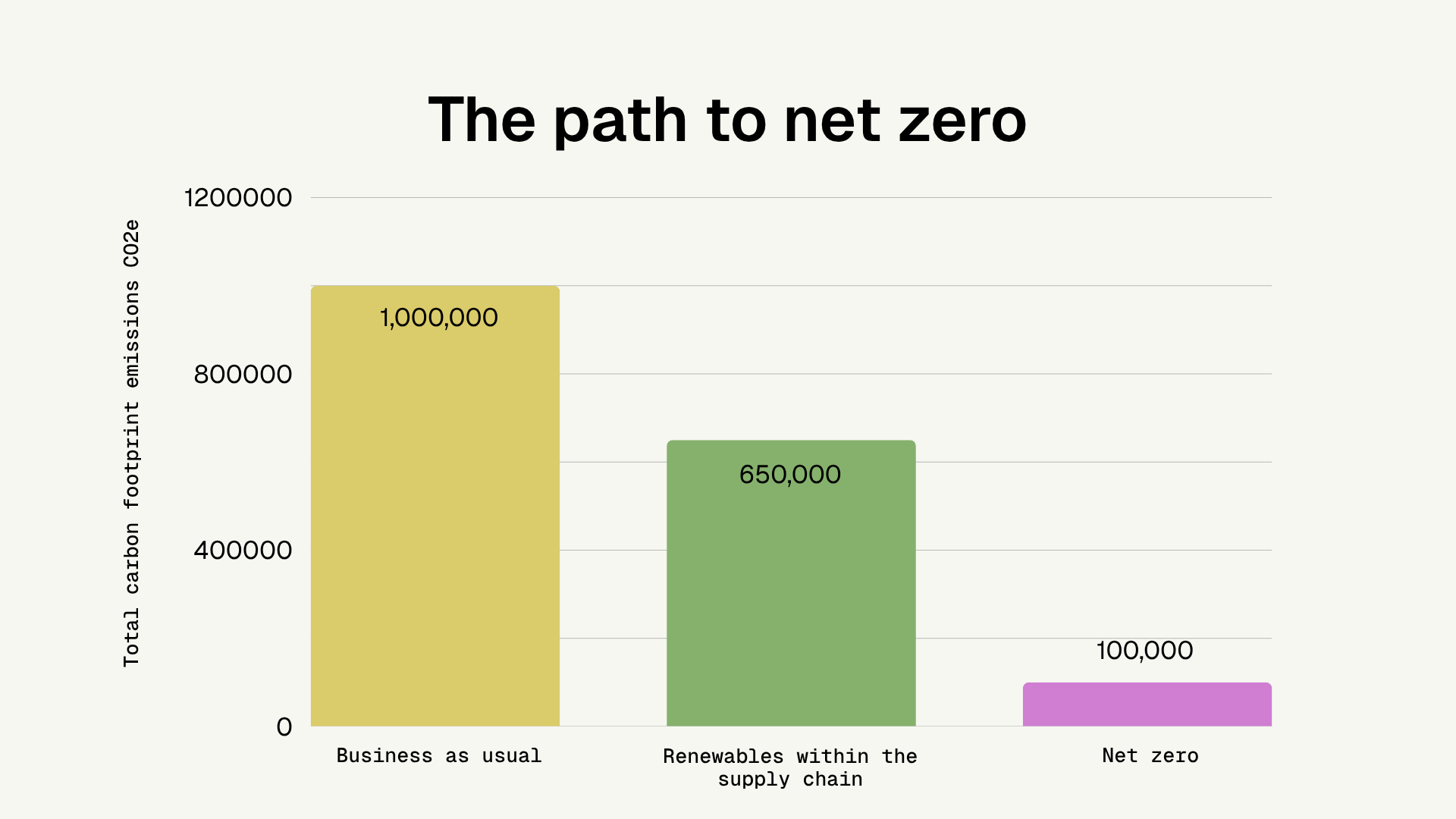Are we overcomplicating scope 3 reduction plans?
November 13, 2025By Hollie Parry, ClimatePartner UK
Decarbonising supply chain emissions is critical to reaching net zero and securing a liveable future. Yet for many companies reporting scope 3 emissions, the pace of reduction is slowing as early measures have already been achieved. As a result, market leaders are either reworking their scope 3 strategies or reframing their approach from broad advocacy to practical execution.
Indirect value-chain emissions often account for 70–90% of a company’s footprint, so credible net zero plans depend on supplier action. Over 11,000 companies have set or committed science-based targets to the SBTi, raising expectations on supplier disclosure and reductions.
Are scope 3 reductions actually feasible?
A simple, high-impact answer is to focus on renewable electricity down the supply chain.

In one example, ClimatePartner modelled the impact of switching all electricity used in a client’s raw material supply chain to renewable sources. For a manufacturing company sourcing mainly from the chemicals sector, a notoriously hard-to-abate industry, this led to a 55% reduction in raw material emissions and a 35% reduction in their total Corporate Carbon Footprint.
Upstream scope 3 emissions are, in many cases, another company’s scope 1 and scope 2 emissions. If suppliers decarbonise their own operations, including electricity use, their customers see a reduction in scope 3 emissions.
Shifting suppliers to renewable electricity is therefore one of the most direct and scalable levers for scope 3.
Is grid decarbonisation enough to reach scope 3 reduction targets?
In the first half of 2025, renewables collectively generated more electricity globally than coal for the first time on record. For many manufacturers, electricity used in the raw material supply chain could represent over a third of total emissions, so continued grid decarbonisation can make a meaningful difference on scope 3 reductions.
But growth in renewable energy is uneven across regions. The International Energy Agency roughly halved its 2030 U.S. outlook, citing recent policy shifts.
In short, companies cannot rely solely on organic grid decarbonisation to meet their scope 3 goals; proactive supplier engagement must be prioritised.
Simplify scope 3 reduction plans by cutting through the noise
Focus your communications and supplier engagement on the impact of switching supplier electricity to renewables, then make it workable with clear roles and shared rules. This includes:
- Setting supplier engagement targets: Require key suppliers to disclose energy and emissions (scopes 1–2 and screened scope 3) and to set science-based targets. Use existing disclosures (e.g., CDP) to map and prioritise the largest emitters and those furthest from renewable electricity.
- Providing technical and educational support: Help suppliers procure renewable electricity and understand why it matters for accounting and claims.
- Aligning with globally recognised guidance: Follow RE100, SBTi, etc. to standardise supplier data (including market-based factors) and introduce Energy Attribute Certificates (EACs) as the entry point for renewable-electricity claims.
Quick win to accelerate progress: EACs
Supporting renewable electricity adoption across your supply chain is one of the most effective and economical ways to cut scope 3. EACs and Renewable Energy Certificates (RECs) provide a fast, flexible entry point that lets organisations match use with verified renewable generation, even under existing contracts. When suppliers make the switch, those reductions flow directly into your scope 3 footprint.
Beyond emissions, enabling renewable electricity in your value chain can reduce exposure to energy price volatility, improve operational efficiency, and differentiate in RFPs and investor dialogues.
Renewables down the supply chain is just the first step
While renewable electricity across the supply chain can reduce a company’s footprint by up to a third in some cases, reaching net zero requires at least a 90% reduction in total emissions.

Supplier engagement on renewable electricity should sit within a broader scope 3 strategy that tackles operational efficiency, process changes, materials, logistics, and product design.
However, encouraging renewable electricity procurement in your supply chain is a first step, actionable today, to move companies closer to net zero.
